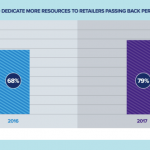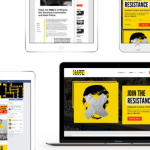Analyst: Google May Not Be Working Fast Enough On ‘Brand Safety’ Issues
Analyst: Google May Not Be Working Fast Enough On ‘Brand Safety’ Issues
by Tobi Elkin @tobielkin, March 27, 2017
The number of marketers suspending advertising on Google is growing beyond the U.K. to the U.S., Australia and other parts of the world. Advertisers are concerned their ads are showing up next to offensive content on the media and technology giant’s network.

To date, Google has said it is addressing the issues with technology and applying human resources to vet content.
Research analyst Brian Wieser of Pivotal Research Group on Monday continued with his “Hold” rating for Alphabet, Google’s parent company.
Wieser’s latest analysis indicates that Google’s efforts to get a handle on the problem of so-called “brand safety” have had mixed effects. On Friday, Coca-Cola, PepsiCo, Wal-Mart, DISH, Starbucks, and General Motors joined the list of advertisers in the U.S. that have pulled all non-search ads from Google.
Wieser’s research note said over the weekend, newspapers in Australia report that global brands Vodafone, Nestle, and Kia and local brands Holden, Bunnings, and JB Hi- Fi have jumped on the bandwagon, curtailing ad spending on Google.
“That advertisements can evidently be found so easily alongside brand-unsafe content — now that press and others are actively looking — suggests either Google’s technologies for filtering brand unsafe content are simply not good enough or its process for vetting content suppliers is insufficient or both,” Wieser wrote.
The problem surfaced in the U.K. in February after a Times of London report. Wieser said that Google has had some time to address the issue.
Wieser questioned why Google hasn’t taken control of the situation. “Why Google does not yet appear to have a handle on the situation is worth assessing. Their public statements do not suggest to us that the company appreciates the degree to which advertisers are concerned, and the ongoing announcements of advertisers suspending their activity on Google properties reinforces our view.”
He went on to suggest that it’s possible Google has downplayed the issue “because it thinks concerns articulated by press, advertisers, and agencies are simply part of an effort to hurt Google rather than something more fundamental.”
It would appear that advertisers have the upper hand here, as well as organizations that represent them, like the Association of National Advertisers, which has been making noise about these and other issues including measurement/metrics, data privacy, and transparency, for some time.
Wieser notes “press outlets have been all-too-happy to point out Google’s failings, and actively look for instances where they can shame advertisers away from Google. But if the underlying problem didn’t exist, Google wouldn’t have had anything to worry about.”
In addition, Wieser said many CMOs were “genuinely unaware of the problem and related risks given the range of issues they are charged with managing.” If that, by and large, is true, it’s astonishing. How can CMOs be so unaware? Is it because they have too many other pressing issues to think about?
Wieser’s note suggests that beyond brand safety, there are major challenges facing Google and others in the space regarding ad-tech vendors, campaign measurement and attribution, viewability and ad fraud.
Wieser estimates a -1% revenue impact on Google this year and next, “assuming the problem is settled soon.” He estimated last week in a research note that brand safety issues would reduce spending by large brands on Google, “primarily because Google’s focus in conversations with brands will probably center around brand safety rather than new strategic initiatives. Google will have a harder time persuading advertisers to shift spending to Google – and YouTube in particular – from TV than might otherwise have been the case.”
So where will advertiser dollars go if they decide to shift some money to other channels?
Speculation is that media dollars could go to TV, though paid search advertising is also the option of choice for small and medium-sized enterprises. TV upfront season is coming–we’ll soon find out where the dollars will go.
MediaPost.com: Search Marketing Daily
(68)













